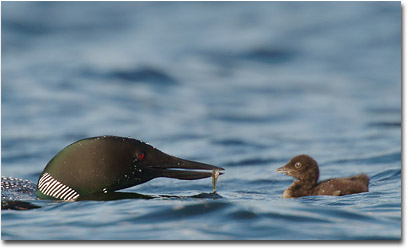|
NPN Interactive
How Far Will You Go to Get a Picture?
Text and Photography Copyright Bill Silliker, Jr.
All rights reserved.
Accordingly the bird was removed in his prison into a very small room, and closely covered with blankets, into which was introduced a pan of lighted charcoal, when the windows and door were fastened, and the blankets tucked in beneath the cage. I waited, expecting every moment to hear him fall down from his perch; but after listening for hours, I opened the door, raised the blankets, and peeped under them amidst a mass of suffocating fumes. There stood the Eagle on his perch, with his bright unflinching eye turned towards me, and as lively and vigorous as ever! Instantly reclosing every aperture, I resumed my station at the door, and towards midnight, not having heard the least noise, I again took a peep at my victim. He was still uninjured, although the air of the closet was insupportable to my son and myself, and that of the adjoining apartment began to feel unpleasant. I persevered, however, for ten hours in all, and finding that the charcoal fumes would not produce the desired effect, I retired to rest wearied and disappointed.
Early next morning I tried the charcoal anew, adding to it a quantity of sulphur, but we were nearly driven from our home in a few hours by the stifling vapours, while the noble bird continued to stand erect, and to look defiance at us whenever we approached his post of martyrdom. His fierce demeanour precluded all internal application, and at last I was compelled to resort to a method always used as the last expedient, and a most effectual one. I thrust a long pointed piece of steel through his heart, when my proud prisoner instantly fell dead, without even ruffling a feather.
John James Audubon’s 1830’s description of how he killed a golden eagle to paint Plate # 32 of his Ornithological Biography.
Judge him not too harshly, as his was a far different time and the world was a much different place then. But isn’t it fascinating to read these words from a man revered for his obvious love of birds and his wondrous renditions of them, that remain both classic artwork and accurate description to this day?
Audubon had no camera to capture color and form or to freeze motion with. And so he had to resort to killing his subjects to get their picture. And as per the above, he apparently felt no guilt about it.
So what would he think about some of the oft-quoted platitudes we hear today?
“When the animal reacts to your presence, you're too close.”
“No photograph is worth sacrificing the welfare of the subject.”
“Take only pictures, leave only footprints.”
We’ve all heard those statements. And we’ve seen the signs that say: keep back. Some of us have even met the over protective ranger or worse, the under informed summer-help naturalist.

Earning the trust of a loon family usually requires working with them for hours from a small boat or canoe at a respectful distance. Even then, it sometimes helps to have a lot of reach. For this picture they actually approached an island from which I shot them - digitally - with a 500mm Nikkor f4 lens with a 1.4 TC attached, for an effective "reach" of 1050mm due to cropping effect of the Fuji S2 camera used. It was cropped again about 1/3 for this small sized image.
|
I disagree with the blanket statement that any reaction from an animal constitutes a violation of field ethics. Deer should look up when they see you. And birds fly off a bit when you walk through the woods without a camera.
But the reality is that more of us are going to the woods, the wilds, to practice the fine art of wildlife photography. And as more of us do, will we someday be faced with a new dilemma? Will we all be restricted by some least common denominator rule and made to stay “only on the platform” or 500 feet away or with some other of the rules that “those who care” have suggested for “wildlife photographers”?
We might face that if we don't help to educate each other about what really does constitute damaging stress to wildlife. The problem is compounded as we more often all go after the same animals at the same places that are also heavily visited by nitwits who take no time to learn about the species or what constitutes stress to an animal.
And while some of the places where wildlife becomes "habituated" to seeing people make it easier to get closer without stressing wildlife, those places are also harder to control if you are the resource manager trying to keep the nitwits from ruining the experience for all by harassing the wildlife. So isn't it our responsibility not to be one of them?
Shouldn’t we learn not only the rules, but also something about the species that we seek to photograph? Wouldn’t that help us to get better photographs without interfering – and perhaps being wrongly condemned for what we are doing?
I urge all to read and figure out what is really meant by the NANPA Field Ethical Practices Guidelines and the American Birding Association Principles of Birding Ethics posted on this site on the Nature Photographers Ethics Resource Page.
And I also urge all to honestly answer the question: How far will you go to get a picture?
Bill Silliker, Jr. - NPN 012
What do you think? Visit NPN's Interactive Article Forum and join our discussion on this article!


| 


